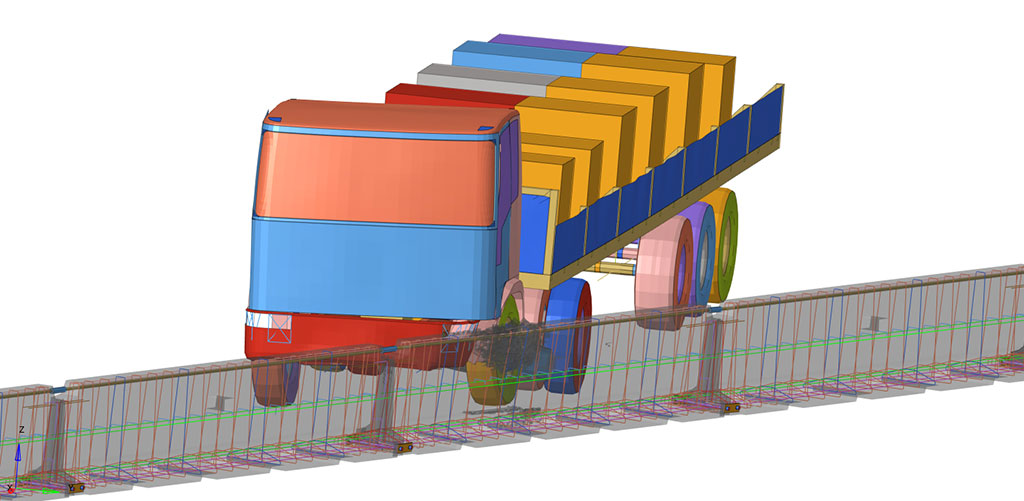Services
Numerical simulations
Analysis and verification of mechanical structures with F.E.M. method
Computational mechanics applied to the simulation of vehicle impacts against road barriers and obstacles. A support for the verification of safety barriers’ performance in different conditions compared to those of the ITT.
AISICO is able to offer computational mechanic services through finite elementi numerical modelling of dynamic phenomena, in accordance with regulation UNI CEN TR 16303:2020.
The simulations certified by Aisico, applied to vehicular collisions, terminate with the evaluations of the behavior of the road restrain devices, already tested, in order to validate successive product alterations per regulation 1317-5:2012.
2010: Start of FEM Numerical Simulations activity.
2018: AISICO is the first in Europe to obtain the UNI CEI EN ISO/IEC 17025 accreditation for Numerical Simulations according to the standard (ex Pr EN16303:2018 now UNI EN 16303:2020)
The technical team at Aisico provides a complete service, which encompasses the elaboration of complex 3D graphics and the modelling of the devices to be simulated, the calibration of the numerical model with the crash test on a real scale, and the numerical simulation through FEM software.
The computational mechanics services provided by AISICO address multiple areas and are applicable to different types of products:
1. Road infrastructure level

- safety barriers, terminals, impact attenuators, motorcyclist protection devices, lighting poles, signage supports, bridge pier protection and parapets;
2. Road safety level

- verification of the behavior of barriers tested and modified according to Appendix A of UNI EN 1317-5:2012, in order to obtain certificates of conformity.
- verification of road safety barriers in impact conditions different from those provided for by the standards in force concerning experimental tests;
- verification of the restraint systems in installation conditions different from those of the crash tests
- analysis and verification of transitions between road barriers;
- evaluation of the severity of an impact through the estimation of impact severity indices such as ASI (Acceleration Severity Index), THIV (Theoretical Head Impact Velocity), HIC (Head Injury Criterion), OIV (Occupant Impact Velocity) and ORA (Occupant Ridedown Acceleration) even under conditions other than those specified in EN 1317-2: 2010;
- verification of the level of the support structure’s passive safety for road equipment.
3. Anti-terrorism systems

- Analysis of tested anti-intrusion device aimed at the evaluation of their performance after structural changes (IWA 14-1:2013, ASTM F2656/F2656M-2020 e PAS68:2013);
- certification according to the PAS68: 2013 standard for type B modifications as specified in table C.1
4. Biomechanics

- evaluation of the main biomechanical indices during an impact, study of the dynamics of passengers inside a vehicle during an impact, simulation of pedestrian-vehicle impacts;
5. Railway

- mechanical analysis and structural verification of single components (crates, trolleys and furnishings) or entire wagons;
6. Automotive

- analysis of the behavior of vehicle’s components and evaluation of the dynamic impacts on structurers.




















